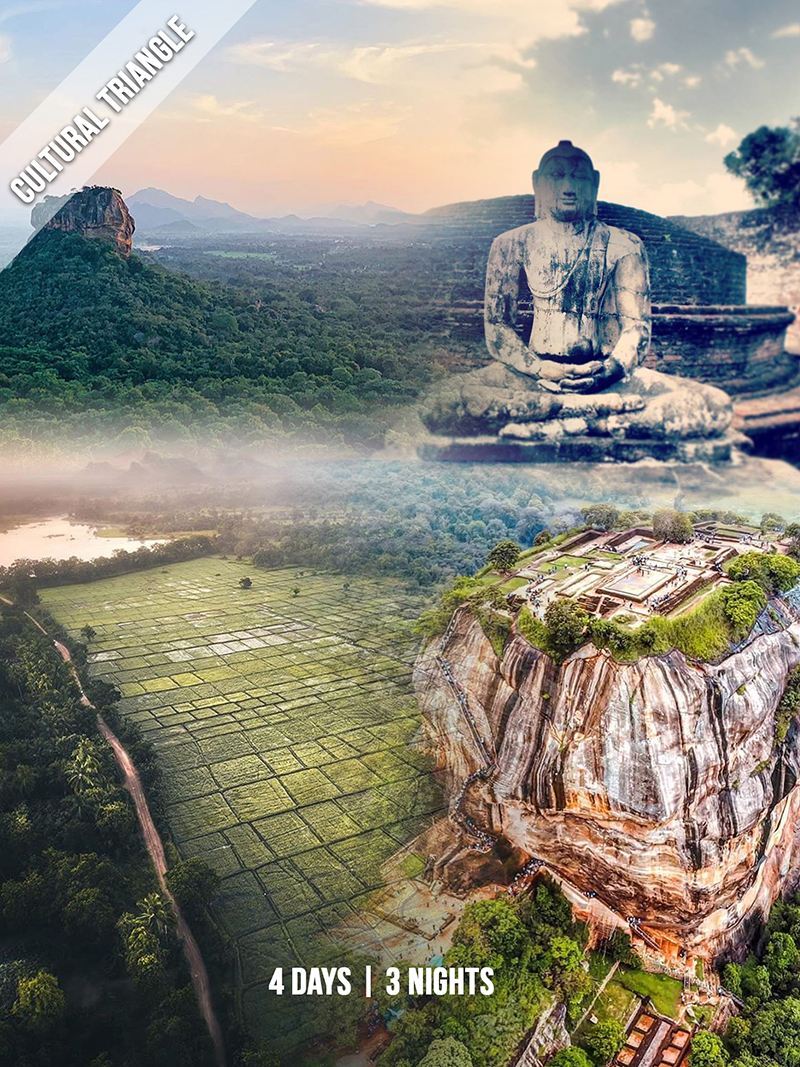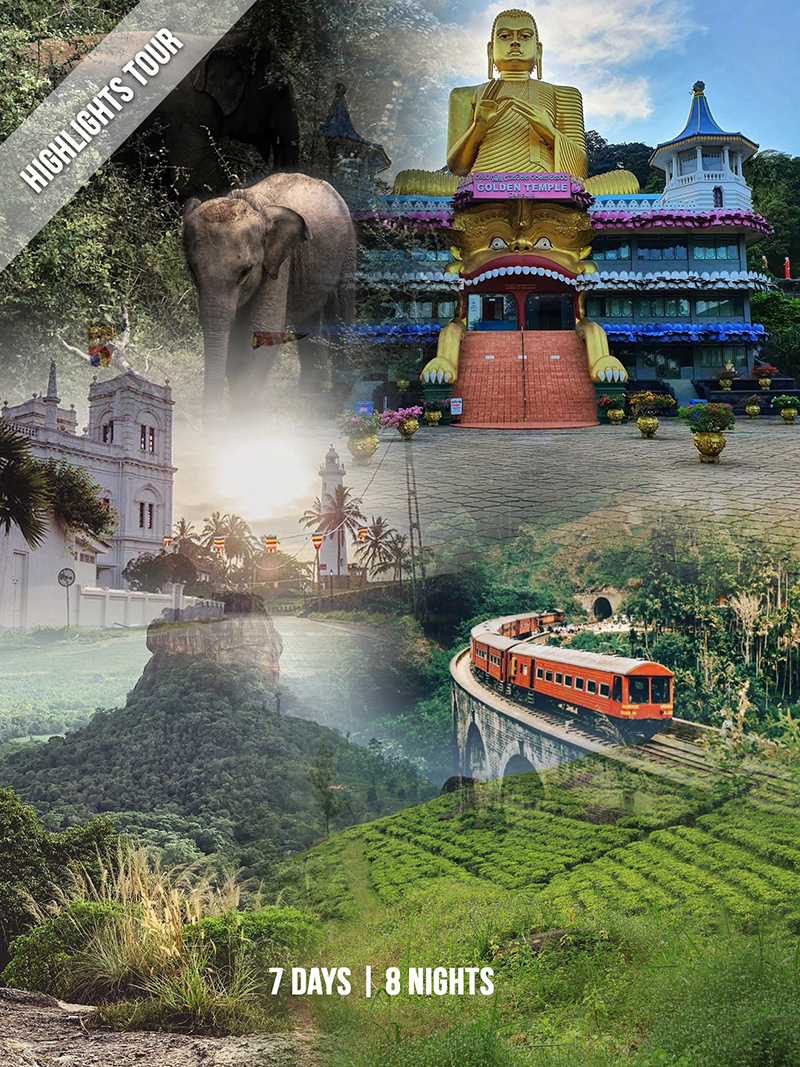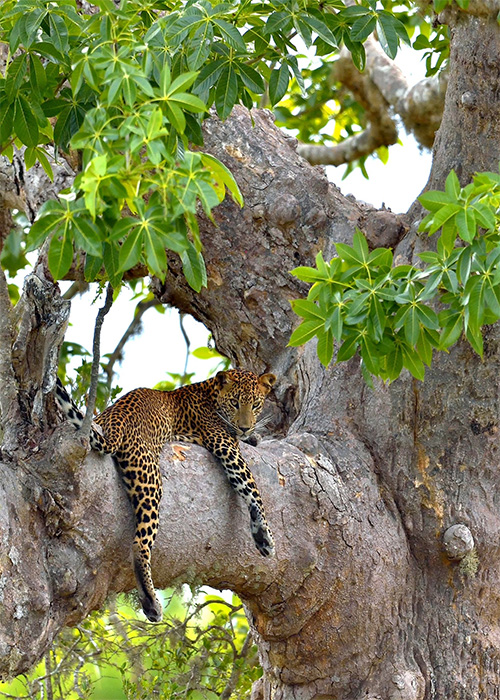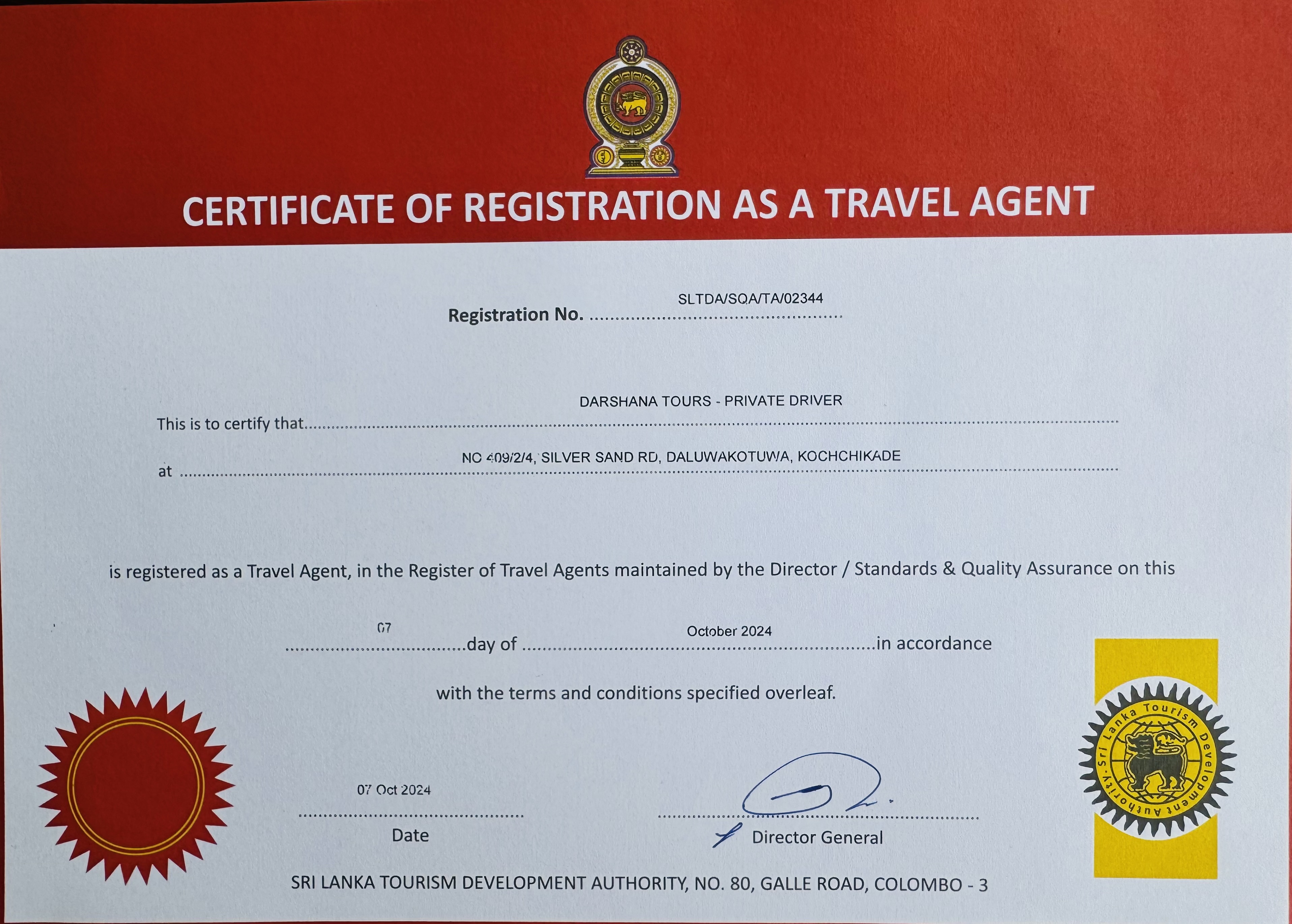Bundala National Park
Bundala National Park is the first Sri Lankan wetland to be declared a Ramsar site under the Ramsar Convention on Wetlands. Located 250km south of Colombo in the district of Hambantota, this thorny scrub jungle with its beaches, sand dunes and lagoons has become known for its varied biodiversity. 197 different species of birds along with 32 different mammal species makes it a popular reserve for birdwatchers and wildlife enthusiasts. In fact Bundala National Park is considered a niche bird watching experience due to the large numbers of Greater Flamingos who migrate there from Siberia and the Rann of Kutch in India. The Greater Flamingo arrive in Bundala between August and April and up to 2000 of them were counted during one migratory period. A small herd of elephants, wild boar, sambar, the spotted deer and the grey langur monkeys are some of the other animals that can be spotted in the heat of Bundala.
Horton Plains National Park
Over 2000m above sea level is Horton Plains, Sri Lanka’s highest plateau and what has been referred to as one of the most ‘awesome and forbidding regions’ of the country. Located in the central hill country 20km south of Nuwara Eliya the plains are difficult to access but it is well worth the trek. This magnificent landscape with its untamed grasslands, patches of dense forest, lakes and waterfalls is a sight for sore eyes. Inhabited by a variety of wildlife the plains are home to wild boar and the sambar deer while the shaggy bear-monkey and the endemic toque macaque can also be spotted on occasion. Horton Plains National Park also consists of attractions such as Bakers Falls, Chimney Pool and World’s End. World’s End with its 880m sharp drop downwards is reputed for being the finest view in Sri Lanka and is at the end of the Horton Plains plateau.
Gal Oya National Park
After Independence Sri Lanka’s first significant irrigation project is the Gal Oya Valley project. Within it was built the biggest reservoir in the country, the Senanayake Samudra which is considered the key feature of the Gal Oya National Park. In fact the Gal Oya National Park has the distinction of being the only park in the country where boat safaris are also an option. Catching sight of elephants swimming across the lake being one of the most exciting aspects of the boat safari. That is if you are not already impressed with the picturesque hill-forests, the leopards, water buffaloes, wild boar, crocodiles, and different species of deer that inhabit the park. There are also many little islands on the Senanayake Samudra which are dwelling place of numerous birds species. It is estimated that from 430 bird species on record in Sri Lanka a 150 of them reside at Gal Oya.
Kaudulla National Park
The latest attraction in eco-tourism, Kaudulla National Park was opened in 2002 and is the newest national park and wildlife reserve in Sri Lanka. Situated within easy access of the Cultural Triangle, Kaudulla is about 6km from the Gal Oya Junction on the Habarana – Trincomalee road. The name of the park is derived from being situated near the historic Kaudalla Tank of the ancient King Mahasena. Jeep safaris are the preferred option by which to visit the park and August to December have been ear-marked as the best months during which to do so as around 250 elephants inhabit the park during that period. A 6656-hectare elephant corridor between the Minneriya National Park and the Somawathie Chaitya has also been established in the park. The dry evergreen forests of the park are home to 24 mammal species, 25 reptile species and a 160 species of birds. Leopards, fishing cats, sloth bear and the endangered rusty spotted cat are favorites among visitors to Kaudulla.
Kumana National Park
Located in the South-East corner of Sri Lanka, and neighbouring the Yala National Park, the Kumana National Park is Sri Lanka’s foremost bird sanctuary as it houses a diverse range of endemic and migrants birds. An ideal camping and safari spot, Kumana is a favorite location for bird watching devotees. From sightings of the very rare migratory Black Necked storks, Yellow Footed Green pigeons and the Greater Racket-tailed Drongo to the more frequently seen Eurasian Spoonbill, Purple Heron and Wood sandpiper Kumana is abound with a total of 255 species of birds as well as mammals such as the European Otter, Golden Jackal and a few elephants. Of equal interest are ancient 1st and 2nd century cave inscriptions which have been discovered within the vicinity of the park. The famous Pada Yatra pilgrims consisting of Hindu and Buddhist devotees annually cross Kumana by foot in their pilgrimage to Kataragama.
Minneriya National Park
Between Habarana and Polonnaruwa are the scrub forests of the Minneriya National Park. A haven for sambar deer, toque macaques and leopards, the park is now a world renowned destination site. This is due to the fact that on the shores of Minneriya’s nearly 2000 year old man-made lake the world’s largest gathering of elephants takes place. This spectacular sight occurs within the boundaries of the Minneriya National Park during the dry season from July to October. With nearly three hundred elephants gathering every evening it is no surprise that Lonely Planet has ranked it at number 6 for being one of the world’s best wildlife spectacles. The ‘Gathering’ (as it has come to be known) is a result of the lack of waterholes during the drought. Unable to receive their daily intake of water the elephants make their way to the Minneriya tank making it an event not to be missed.
Wilpattu National Park
The oldest and largest national park in Sri Lanka, the Wilpattu National Park is located on the West Coast of the island and consists of what is mostly thick secondary forest combined with small clearings . However unlike semi-arid Yala, Wilpattu is more lush and scenic with a variety of vegetation to be found in different parts of the park. The park is unique for its high concentration of villus (basin like natural tanks) which provide water to herds of wild animals and flocks of birds. Noteworthy is the fact that crocodiles also make their home in this villas. However Wilpattu’s fame is derived primarily from its leopard and bear population. It is quite a common occurrence to see leopards relaxing or drinking water from the many villus found in the park . The primitive nature of Wilpattu makes it all the more exciting to experience with January to May being considered the best time to visit.
Yala National Park
Tucked away in the southeastern corner of the island and 300km away from the capital Colombo is Sri Lanka’s most visited national park, generally referred to as Yala. Considered by the BBC to be one of the best wildlife destinations in Asia, the park is made up of five blocks of which only two are open to the public. The high density of leopards in Block 1 means it is frequently visited but until 1938 Block 1 was reserved for hunters and only thereafter was it made a conservationist reserve. Yala is also a favorite spot for seeing elephants grazing in the scrub jungle or ambling across the road. One of the most beautiful sights at Yala is the wonderful mating dance of the fabulous peacock. Most travelers consider it well worth the lengthy journey when they are rewarded by the peacock in this fashion. Undoubtedly a wildlife safari at its best.
Udawalawe National Park
Situated south of the central hill country the Udawalawe National Park was established in 1972 after the Udawalawe Reservoir was constructed causing the displacement of the wild animals in the area. The third most popular park in the island, Udawalawe is an important habitat for aquatic birds and Sri Lankan Elephants. With around 600 elephants in the park, Udawalawe is reputed to be one of the best places in the island to spot these giant creatures. In 1995 the intriguing Elephant Transit Home was founded and provides shelter and a home to around 25 baby elephants who were orphaned in the wild. UdaWalawe is also inhabited by crocodiles, foxes, 30 varieties of snakes, spotted and sambar deer as well as hundreds of buffaloes and a few leopards. There are three camp sites and four bungalows along the reservoir and the Walawe Ganga if you want to experience an authentic life in the wilds.
Wasgamuwa National Park
The name ‘Wasgamuwa’ came about from the words ‘Walas Gamuwa’, Walasa or walaha being the Sinhalese term for sloth bear and Gamuwa the term for wood. The park was named as such because at one time it had a large quantity of Sri Lankan Sloth bears. At present it is still inhabited by these endangered animals although catching sight of them is not quite as easy. Surrounded almost completely by rivers as it borders the Mahawelia and Amban river, the park is an exciting place at which to see some interesting bird species. For instance the endemic Red-Faced Malkoha is found in Wasgamuwa as is the Yellow Fronted Barbet. With over a 150 species of flora the park is high in biodiversity. Its historical significance is also made apparent as it contains the ruins of the Dathota, Malagamuwa and Wilmitiya irrigation tanks and Kalinga Yoda Ela canel built by Parakramabahu I.
Kitulgala – Kelani Valley Forest Reserve
Kitulgala is best known for the 1957 Academy Award winning film, The Bridge on the River Kwai which was filmed on the Kelani River. A rain forest area affected by both monsoons, Kitulgala, also known as the Kelani Valley Forest Reserve, is perhaps the wettest place in Sri Lanka. It was established in order to protect the Kelani River’s drainage basin. In terms of wildlife Kitulgala has a considerable number of elusive endemic birds such as the Ceylon Grey Hornbill, Spot-winged Thrush, and the Ceylon Scimitar Babbler. The river contains endemic fish and amphibians while the mammal life includes the Grizzled Indian Squirrel. However currently the name Kitulgala has become synonymous with white-water rafting. When a person suggests that they go to Kitulgala a weekend of adventure which certainly would include some fabulous meals, a jungle walk and camping in the wild outdoors is what come to mind.
Sinharaja Rainforest
The Sinharaja Rainforest is a UNESCO World Heritage Site and a designated Biosphere Reserve located in the south-west lowland wet zone of Sri Lanka. It was first declared a forest reserve in 1875 but has been of mythical and historical importance for the people of Sri Lanka for centuries prior to that. The word Sinharaja , which translates directly as Lion (Sinha) and King (Raja) is the last remaining tropical rainforest in Sri Lanka with 60% of the trees being endemic. It is also the location for over 50% of Sri Lanka’s endemic species of mammals, butterflies as well as reptiles, rare amphibians and insects. Visitors to Sinharaja are constantly amazed by the amazing assortment of life that they encounter when exploring this biodiversity hotspot. Spineless Forest Lizard, a Sri Lankan Rose or a Bamboo Orchid are just a snippet of the extraordinary animals and plants found here.
Pigeon Island National Park
A favorite hot spot on the East Coast is Pigeon Island, one of only two marine national parks in Sri Lanka. Situated just 1km away from the popular coastal town of Nilaveli, Pigeon Island is named after the Blue Rock Pigeon, which is an endangered bird species native to the island. It was in 1963 that the islands were first declared a sanctuary as a protective measure for the birds while in 2003 it was declared a National Park. The area is divided into large pigeon island and small pigeon island. It is also famed for having some of the best remaining coral reefs in Sri Lanka as the coral reefs which circle large pigeon island are nearly 200 feet in length and 100 meters in width. Aside from the 300 different coral reef fish found in its waters there are also juvenile and adult Black-tip reef sharks and sea turtles making it an underwater adventure to experience.
Mullaitivu National Park
Once the scene of fierce battles during the civil war in Sri Lanka, Mullativu is now in the process of getting a facelift as the northern part of the district, has been turned into a Wildlife Sanctuary. More than a 100,000 acres in northern Mullativu has been designated a wildlife sanctuary especially for elephants. According to the Government the sanctuary was established in order to solve the increasing conflict between wild elephants and humans, a result of deforestation which destroyed the natural habitat of the elephants. This led to elephants going in search of food in areas inhabited by villages and led to a number of human as well as elephant deaths. A 100 years ago there were 15,000 elephants roaming in the wild but at present the number remains at between just 3000-4000 causing concern among wildlife conservationists. Thus by demarking the northern jungles of Sri Lanka as a National Park the goal is to conserve the remnants of Sri Lanka’s natural habitats.




















